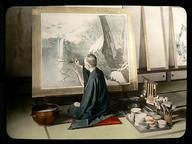Quiz Answer Key and Fun Facts
1. The term for a Chinese character that is a symbolic representation of a thing or concept is called what in English?
2. 'Ikebana' is the Japanese art of...?
3. Frequently depicted in Hindu art, who is the Hindu god of thunder?
4. 'Sumi' is the term for this item in Japan, while in China it is called 'mo'. What essential item for painting and calligraphy am I refering to here?
5. This term refers to a type of pattern dyeing regularly employed in Indonesia using unwoven yarn. Name it!
6. Many people practically equate Chinese jewelry to 'Jade' because it so frequently appears in jewelry stores throughout that country, but strangely there is not source for Jadeite within China despite it being such a huge country. Hence, the Chinese have traditionally imported their jadeite from which other Asian country?
7. Perhaps the most famous work on paint theory in Chinese history is the 'bifaji', by which of these Chinese artists of the Tang period?
8. The earliest period of Japanese history is practically equated with its pottery, which has been discovered in various sites on Honshu. What is the period, and the potteryware called?
9. When a Japanese artist can create 'without thought' he or she is said to possess what skill?
10. The legendary stories of Buddha which were often illustrated on wall paintings in China and other areas of Buddhist worship were known by what Sanskrit name?
Source: Author
thejazzkickazz
This quiz was reviewed by our editing team before going online.
Any errors found in FunTrivia content are routinely corrected through our feedback system.
